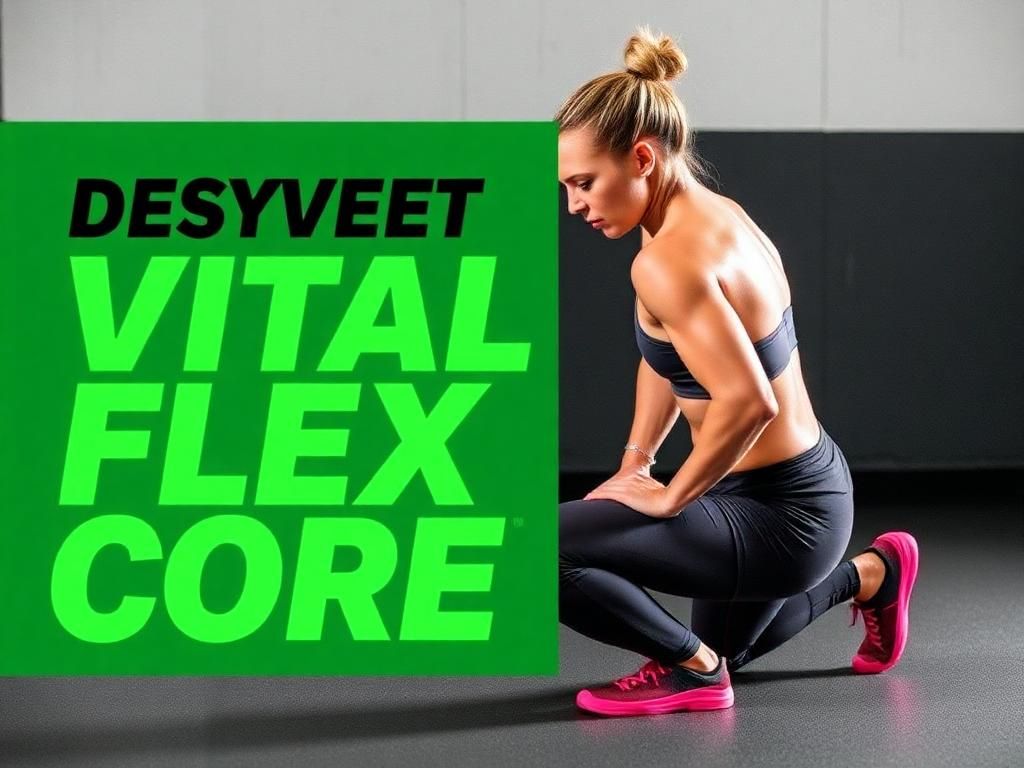Core strength is an essential component of overall fitness that enhances not just athletic performance, but also day-to-day activities. The Vital Flex Core approach emphasizes flexibility, strength, and functionality, focusing on developing a robust core to improve health and well-being. This article aims to educate you about the Vital Flex Core, explore its benefits, and provide you with essential exercises and routines to incorporate into your fitness regimen.
Vital Flex Core Defined
Definition of Vital Flex Core
The Vital Flex Core refers to a holistic fitness strategy centered on strengthening the core muscles while promoting flexibility and dynamic movement. A well-conditioned core not only improves physical performance but also supports the entire body during various movements. Understanding this concept is crucial as it bridges the gap between traditional core workouts and modern fitness goals.
Purpose of the Article
This article aims to enlighten readers about the extensive benefits of the Vital Flex Core approach. We will explore how incorporating targeted exercises can yield significant improvements in strength, flexibility, and overall performance. By the end of this read, you will be equipped with the knowledge and tools to enhance your own core training.
Understanding Core Strength
Anatomy of the Core
The core comprises various key muscle groups that work synergistically to provide stability and movement. These muscles include:
- Abdominals: These muscles are essential for maintaining proper posture and supporting spinal alignment.
- Obliques: Located on the sides, these muscles are crucial for rotational movements and lateral flexion.
- Lower Back Muscles: These muscles provide necessary support for the spine and contribute to overall back health.
- Pelvic Floor: Often overlooked, this muscle group is vital in providing stability and support in locomotion.
Importance of Core Strength in Daily Life
A strong core plays a multifaceted role in daily life, promoting:
- Improved Posture: A solid core helps maintain an upright posture, reducing strain on your back.
- Enhanced Athletic Performance: Whether running, swimming, or playing sports, a powerful core increases efficiency.
- Injury Prevention: Strengthened core muscles can help prevent injuries by providing better support during physical activities.
- Greater Stability and Balance: A robust core enhances balance, making everyday tasks easier.
Benefits of Vital Flex Core
Physical Benefits
The Vital Flex Core offers numerous physical benefits, including:
- Increased Flexibility and Range of Motion: Flexible muscles allow for better movement and reduced risk of injury.
- Enhanced Muscle Endurance: As your core strengthens, your endurance levels increase, allowing for sustained physical activity.
- Improved Coordination and Balance: A strong core fosters better coordination, enhancing performance in sports and daily movements.
Mental Benefits
Besides physical benefits, focusing on the Vital Flex Core can provide mental advantages as well:
- Increased Focus and Concentration: Core workouts can sharpen your mental acuity.
- Boost in Confidence: Physical improvements contribute to greater self-esteem and body image.
- Stress Relief: Physical activity, especially core-focused workouts, can significantly reduce stress.
Functional Benefits
Strengthening your core has functional advantages, aiding you in:
- Daily Movements: Tasks like lifting, bending, or reaching become easier with a strong core.
- Support During Physical Activities and Sports: Enhanced stability yields better performance in all physical pursuits.
Essential Exercises for Vital Flex Core
Static Core Exercises

Static core exercises are fundamental to building strength. Here are some critical moves:
- Plank Variations: Engage your core and hold the position to improve endurance.
- Side Plank: Focuses on oblique activation while providing stability.
- Hollow Body Hold: A simple yet effective way to engage the entire core.
Dynamic Core Exercises
Dynamic movements add variety and challenge the core differently:
- Russian Twists: This rotation engages both the abdominals and obliques.
- Bicycle Crunches: A classic exercise promoting functional movement.
- Mountain Climbers: Combine cardiovascular benefits with core training.
Flexibility and Mobility Exercises
Flexibility is just as important; incorporate these moves:
- Cat-Cow Stretch: Promotes spinal flexibility and reduces tension.
- Seated Forward Bend: Aids in stretching the hamstrings and lower back.
- Spinal Rotations: Enhances mobility and reduces stiffness.
Creating a Vital Flex Core Routine
Setting Goals
Establishing clear goals is vital when starting your Vital Flex Core routine. Consider:
- Short-Term versus Long-Term Goals: Aim for immediate results while also laying a foundation for ongoing improvements.
- Personalizing Core Workouts: Tailor your routine according to your fitness level, taking into account both strength and flexibility.
Structuring the Routine
A structured routine is essential for progress:
- Frequency and Duration Recommendations: Aim for core workouts at least 3-4 times a week for optimal results.
- Mixing Different Types of Exercises: Include a balance of static, dynamic, and flexibility exercises.
Progress Tracking
Monitoring your progress keeps you motivated and focused:
- Methods to Track Improvement: Consider keeping a fitness journal to log your routines and notice developments over time.
- Adjustments to the Routine: As you progress, don’t hesitate to modify exercises or increase difficulty.
Common Mistakes to Avoid
Poor Form and Technique
Maintaining proper posture during exercises is crucial. Common mistakes include:
- Forgetting to Engage Your Core: This is crucial for effective workouts.
- Overarching the Back in Planks: This can lead to injuries. Ensure alignment.
Overtraining
Understanding the signs of overtraining helps you avoid burnout:

- Recognizing Signs of Overtraining: Symptoms include fatigue, prolonged muscle soreness, and decreased performance.
- Importance of Rest and Recovery: Allow your body time to heal and rebuild muscle.
Neglecting Other Muscle Groups
Your allegiance to the Vital Flex Core should not discourage total body strength:
- Balancing Core Workouts with Overall Body Exercises: Incorporate movements for arms, legs, and back.
- Importance of a Well-Rounded Fitness Regimen: Total body workouts ensure fewer imbalances and holistic improvement.
Conclusion
Recap of Vital Flex Core Benefits
In summary, the Vital Flex Core approach emphasizes fitness and function through core strength, flexibility, and dynamic movement. Enhancing your core leads to improved performance, reduced injury risk, and overall better health.
Encouragement to Start a Vital Flex Core Routine
You are encouraged to incorporate these exercises into your routines. Remember, consistency and dedication are key to realizing long-term results!
Additional Resources
Recommended Books and Guides
Consider reading “Core Strength Training” to deepen your understanding of core muscles and effective workouts.
Online Courses and Videos
Explore platforms like YouTube for free video resources on core routines.
Communities and Forums for Support
Join online fitness forums or local communities; sharing experiences can enhance learning and keep you motivated.
| Exercise Type | Examples | Primary Muscles Worked | Benefits |
|---|---|---|---|
| Static Core Exercises | Plank, Side Plank, Hollow Body Hold | Abdominals, Obliques, Lower Back | Increases stability & endurance |
| Dynamic Core Exercises | Russian Twists, Bicycle Crunches, Mountain Climbers | Obliques, Abdominals, Hip Flexors | Improves strength & coordination |
| Flexibility Exercises | Cat-Cow Stretch, Seated Forward Bend, Spinal Rotations | Lower Back, Hamstrings | Enhances flexibility & reduces tension |
Frequently Asked Questions (FAQ)
1. What is the Vital Flex Core?
The Vital Flex Core emphasizes building a strong, flexible core for improved overall fitness and daily functionality.
2. How often should I perform core exercises?
It’s recommended to perform core workouts 3-4 times a week for optimal results.
3. Can I do core exercises if I have back pain?
Always consult a healthcare provider or fitness professional before starting any new exercise program, especially with back pain.
4. Are static exercises better than dynamic ones?
Both have unique benefits; incorporating a mix of static and dynamic exercises in your routine is best for balanced development.
5. How can I track my progress?
Keep a journal of your exercises and any improvements in strength, endurance, or flexibility to measure progress.
6. What are some common mistakes in core training?
Common mistakes include improper form, neglecting other muscle groups, and overtraining. Ensure proper technique and balance in your workout.
7. Will core training help with posture?
Yes, strengthening your core contributes significantly to better posture and reduced back strain.
8. What if I don’t see results?
Ensure that you are consistent, evaluate your form, and consider adjusting your routines to challenge your body appropriately.
9. Do I need special equipment?
No, many effective core exercises can be performed with just your body weight or minimal equipment like a mat.
10. Can core training improve my sports performance?
Absolutely! A strong core is vital for overall athletic performance, providing stability and strength across all sports.